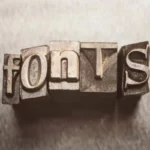- Unveiling Raster Graphics
- Where Raster Graphics Shine
- Pros and Cons of Raster Graphics
- Introducing Vector Graphics
- Where Vector Graphics Shine
- Pros and Cons of Vector Graphics
- What to Choose?
- Final Thoughts
In the exciting world of digital design, two prominent players, raster and vector graphics, claim the spotlight, each showcasing its own artistic touch and distinct allure. Think of them as the dynamic duo sculpting the visual landscape of websites, apps, and digital marvels. They serve different roles, possess varied characteristics, and are used in various ways, spanning from web design to crafting printed advertising materials.
Keep reading to explore the realm of raster and vector graphics, exploring their core disparities and weighing the pros and cons associated with each type.


Unveiling Raster Graphics
Imagine constructing an image using tiny dots, each with its unique shade. Raster graphics bring this concept to life by utilizing these colored dots, known as pixels, to compose visuals. They find extensive use in photos, web design, and video game realms.
Where Raster Graphics Shine
Raster graphics excel when meticulous image reproduction is paramount. They thrive in various domains:
- Web design: Crafting intricate textures, shadows, and gradients.
- Gaming industry: Infusing realism into video game visuals.
- Digital photography: Photo processing and storage.

Pros and Cons of Raster Graphics
Raster graphics deliver intricate detailing and handle complex color shifts. Thanks to their versatility, they are used in applications across diverse fields, from print to web design.
Conversely, raster images come with fixed sizes, and scaling can lead to quality worsening. These files often possess considerable sizes, potentially causing storage and data transmission challenges.
Raster graphics are potent and adaptable tools for crafting visuals, but they bear limitations and drawbacks that must be considered when choosing the type of files for a given project.
Introducing Vector Graphics
Enter vector graphics, a method that harnesses mathematical equations and geometric forms like lines or curves to depict objects. The standout feature is their resolution independence, allowing images to scale seamlessly without losing quality. Vector images are constructed mathematically, forming object contours and boundaries, ensuring clarity and smoothness irrespective of size.
Examples of vector graphics include company logos, icons, diagrams, and charts, frequently created using dedicated software like Adobe Illustrator. In contrast, raster graphics come into play when depicting detailed textures and shadows.
Where Vector Graphics Shine
Vector graphics find widespread use in diverse domains:
- Graphic design: Designing logos, banners, icons, and promotional materials.
- Cartography: Constructing maps that scale impressively without sacrificing essential details.
- Technical design: Contributing to the development of drawings, schematics, and plans.
Pros and Cons of Vector Graphics
Images retain quality at any scale. Typically, vector illustrations occupy less space compared to raster graphics. Shapes and colors can be easily modified.
As for their not-so-good options, they are not suitable for replicating intricate textures and gradients. Specialized skills and tools are often necessary.
Vector graphics prove to be potent and flexible tools, particularly valuable in contexts requiring scalability and line clarity.
What to Choose?
Both types stand as the two primary means of crafting digital images, each boasting distinct attributes and applications. Key disparities include:
- File structure: Raster images consist of pixels, each with a distinct color that shapes the image. Vector graphics construct images using mathematical equations and geometric elements, facilitating lossless scaling.
- Scaling option: Raster images may lose quality when resized, particularly during enlargement. Vector graphics permit image scaling without compromising quality.
- File size and efficiency: Raster often results in larger files and may be less storage-efficient. Vector files generally demand less storage space and offer quicker processing.
- Ideal applications: Raster graphics shine in photographs, lifelike images, and intricate textures. Vector graphics excel in producing logos, icons, diagrams, and elements requiring clarity and scalability.
The choice between raster and vector files hinges on specific project needs. Understanding their key differences aids in selecting the right approach for each task, ensuring optimal outcomes.
Final Thoughts
Raster and vector graphics serve as the heart of digital art, each presenting unique strengths and challenges. These tools pave the way for creating standout designs.
Ready to master? The DevEducation UX/UI course immerses students in both realms, guiding them to synergize these technologies and become adept at solving modern design challenges.
The course equips students with essential tools and resources for practically applying theoretical knowledge, supported by skilled instructors offering personalized guidance at every learning stage. Proficiency in raster and vector graphics not only enhances your skill set but also broadens horizons in your journey as a designer.



